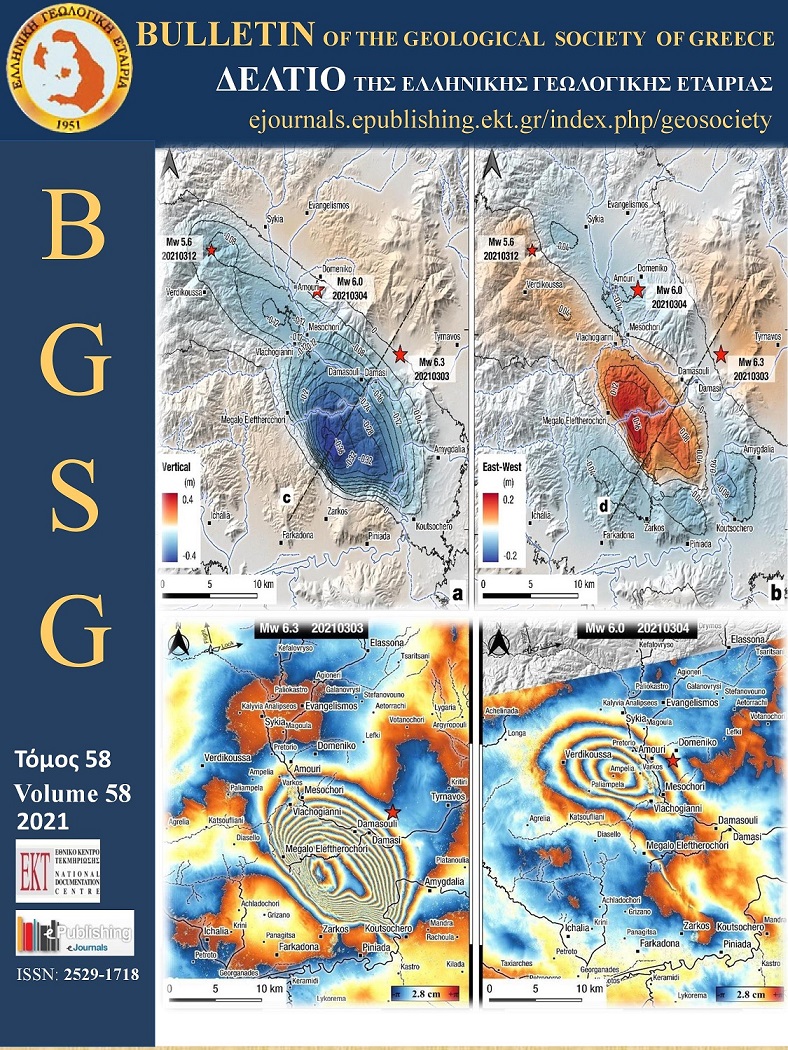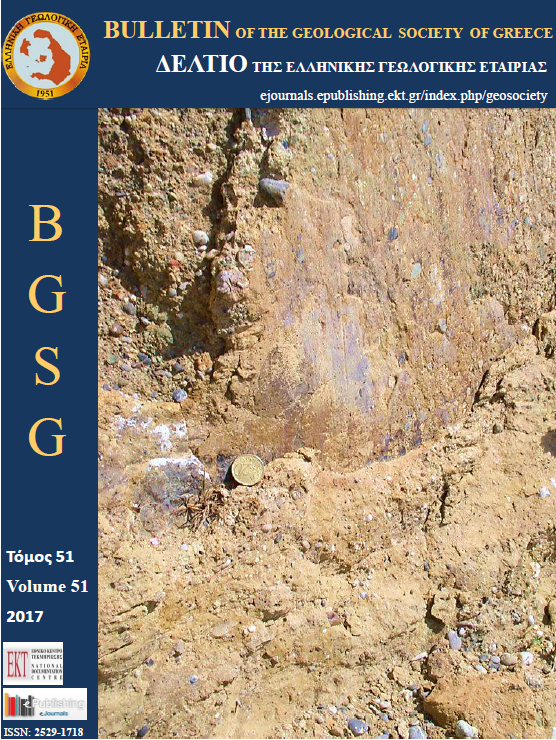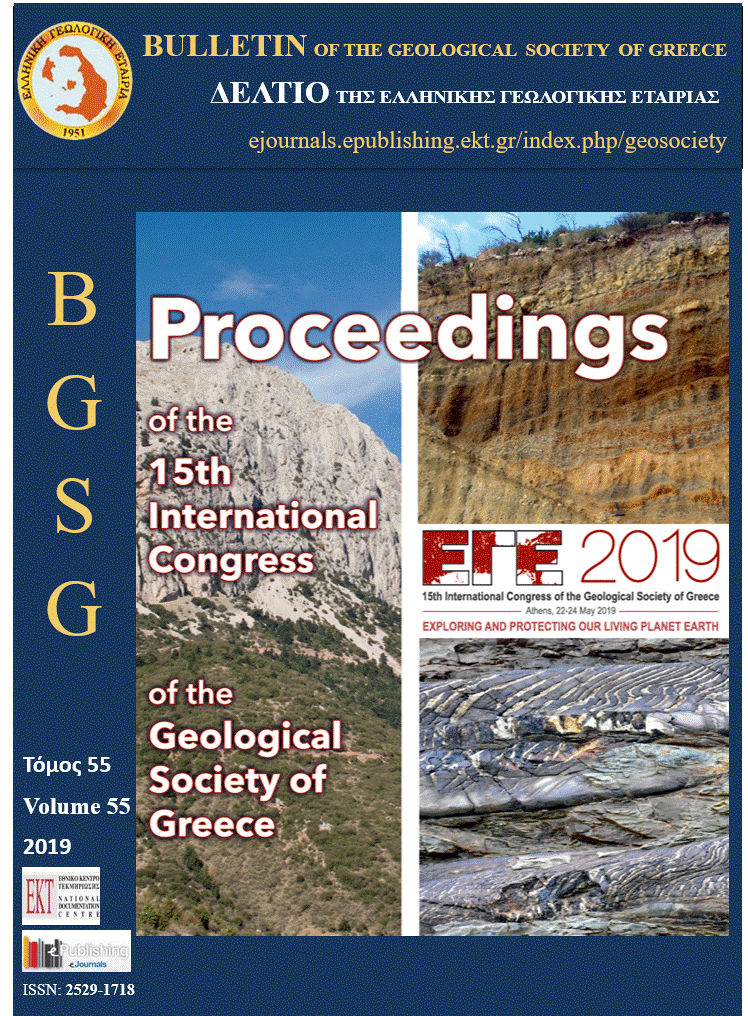The March 2021 Tyrnavos, central Greece, doublet (Μw6.3 and Mw6.0): Aftershock relocation, faulting details, coseismic slip and deformation
Περίληψη
On 3 March 2021, the Mw6.3 Tyrnavos earthquake shook much of the Thessalia region, leading to extensive damage in many small towns and villages in the activated area. The first main shock was followed in the next day, on 4th of March 2021, by an “equivalent” main shock with Mw6.0 in the adjacent fault segment. These are the largest earthquakes to strike the northeastern part of Thessalia since the M6.3, 1941 Larissa earthquake. The main shocks triggered extensive liquefaction mainly along the banks of the Titarisios tributary where alluvial flood deposits most probably amplified the ground motions. Our seismic monitoring efforts, with the use of recordings of the regional seismological network along with a dense local network that was installed three days after the seismic excitation initiation, led to the improved understanding the geometry and kinematics of the activated faults. The aftershocks form a north–northwest–trending, east–northeast–dipping, ~40 km long distribution, encompassing the two main ruptures along with minor activated structures, consistent with the rupture length estimated from analysis of regional waveform data and InSAR modeling. The first rupture was expanded bilaterally, the second main shock nucleated at its northern tip, where from this second rupture propagated unilaterally to the north–northwest. The focal mechanisms of the two main shocks support an almost pure normal faulting, similar to the aftershocks fault plane solution determined in this study. The strong ground motion of the March 3 main shock was computed with a stochastic simulation of finite fault model. Coseismic displacements that were detected using a dense GPS / GNSS network of five permanent stations located the Thessaly region, have shown an NNE–SSW extension as expected from the nature and location of the causative fault. Coulomb stress changes due to the coseismic slip of the first main shock, revealed that the hypocentral region of the second main shock was brought closer to failure by more than 10 bars.
Λεπτομέρειες άρθρου
- Πώς να δημιουργήσετε Αναφορές
-
Karakostas, V., Papazachos, C., Papadimitriou, E., Foumelis, M., Kiratzi, A., Pikridas, C., Kostoglou, A., Kkallas, C., Chatzis, N., Bitharis, S., Chatzipetros, A., Fotiou, A., Ventouzi, C., Karagianni, E., Bonatis, P., Kourouklas, C., Paradisopoulou, P., Scordilis, E., Vamvakaris, D., Grendas, I., Kementzetzidou, D., Panou, A., Karakaisis, G., Karagianni, I., Hatzidimitriou, P., & Galanis, O. (2021). The March 2021 Tyrnavos, central Greece, doublet (Μw6.3 and Mw6.0): Aftershock relocation, faulting details, coseismic slip and deformation. Δελτίο της Ελληνικής Γεωλογικής Εταιρείας, 58, 131–178. https://doi.org/10.12681/bgsg.27237
- Ενότητα
- Φυσικές Καταστροφές

Αυτή η εργασία είναι αδειοδοτημένη υπό το CC Αναφορά Δημιουργού – Μη Εμπορική Χρήση 4.0.
Οι συγγραφείς θα πρέπει να είναι σύμφωνοι με τα παρακάτω: Οι συγγραφείς των άρθρων που δημοσιεύονται στο περιοδικό διατηρούν τα δικαιώματα πνευματικής ιδιοκτησίας επί των άρθρων τους, δίνοντας στο περιοδικό το δικαίωμα της πρώτης δημοσίευσης. Άρθρα που δημοσιεύονται στο περιοδικό διατίθενται με άδεια Creative Commons 4.0 Non Commercial και σύμφωνα με την οποία μπορούν να χρησιμοποιούνται ελεύθερα, με αναφορά στο/στη συγγραφέα και στην πρώτη δημοσίευση για μη κερδοσκοπικούς σκοπούς. Οι συγγραφείς μπορούν να: Μοιραστούν — αντιγράψουν και αναδιανέμουν το υλικό με κάθε μέσο και τρόπο, Προσαρμόσουν — αναμείξουν, τροποποιήσουν και δημιουργήσουν πάνω στο υλικό.





